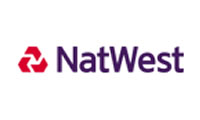
Buy-to-let mortgage
Buy-to-let property can be an excellent method of creating a long term investment for your future. It is popular with people that do not want to invest all their money in a traditional pension plan and would like to invest directly in an asset that they can see and manage themselves.An important first step is to secure buy-to-let mortgages which are different from residential mortgages, such as for first time buyers of remortgage buyers, as the lenders look at the rental income from the property and have specific criteria for lending.
This includes a larger deposit of 25% or more of the property value and a rental income that is 125% of the interest payments at a prescribed rate which could be higher than interest rate you will pay during the introductory offer period.
It is important to ensure you have the right advice for your buy-to-let property. With independent advice from London City Mortgages we can show you the income you will need to secure a mortgage or find the best buy-to-let mortgage deal for your circumstances and make the online mortgage process easy for you.
Benefits of a buy-to-let property
A buy-to-let property can offer the benefits of a regular income and capital growth in the long term offering security for your future. To ensure success you need to know your target market to attract the desired tenants.You must offer the right property in the right place at the right price.
By making the right investment your property could give you gross yields of 5% to 10% each year although you will need to meet the cost of the buy-to-let mortgage and maintenance costs of the property.
In addition, a property bought in an area with economic growth potential would mean more people moving to this area. This would help to increase demand for both rental and purchased properties. You would benefit from both increasing rental income and increasing property values in the future.
Once you have your first buy-to-let property you gain experience of the management process and it becomes easier to build a buy-to-let portfolio of properties. Buying more properties can also reduce the risk of your investments with income from various sources protecting you from void periods.
Securing a buy-to-let mortgage
If you cannot buy your property outright with cash, securing a mortgage for your buy-to-let property is essential. These mortgages are set-up on an interest only basis to maximise cashflow which produces the best return on your investment.You will also need to take account of Stamp Duty Land Tax (SDLT) for new buy-to-let properties which increased by 3% on the whole purchase value from 1 April 2016 as the following table shows:
| Property value | Standard rate | Buy-to-let rate |
|---|---|---|
| Up to £125,000 | 0% | 3% |
| £125,000 - £250,000 | 2% | 5% |
| £250,000 - £925,000 | 5% | 8% |
| £925,000 - £1.5m | 10% | 13% |
| over £1.5m | 12% | 15% |
The interest rate you pay will be higher for a buy-to-let mortgage than residential due to the higher associated risks, although nevertheless competitive. With a loan to vale of 75% the rate could be as low as 2.79% and a loan to value of 60% is down to 2.35%.
Lenders also look at the rental income from the property and this must be at least 125% of the interest payments. Each lender has a prescribed rate which could be higher than interest rate you will pay during the introductory offer period. This level is set to ensure the purchase is affordable with void periods. Ultimately you should be looking for the highest possible rental income for the greatest yield in order to produce attractive buy-to-let investment returns.
The interest rate set could be from 5% to 6% and can change over time. If the rental income evidence is not as high as 125% of this rate the lender will not give you the mortgage. For example, if you’re buy-to-let property is valued at £200,000 and you have a deposit of 25% of £50,000 and borrow £150,000 the rental income must be £871.25 to £937.50 per month depending on the lender rate to be accepted.
If the maximum rent you can ask for is less than the minimum, you will need to increase your deposit (which reduces the mortgage loan) in order to secure an offer. In some cases, such as new-build homes, lenders will automatically ask for a larger deposit of 35% as they consider these properties a higher risk. The higher deposit makes it more likely that the rental income will meet the lenders criteria.
Like a residential mortgage, lenders expect you to prove your income as well as provide evidence the property rental income will be 125% of the lenders prescribed rate.
Remortgaging your buy-to-let
A buy-to-let mortgage can include an introductory offer period with an interest rate lower than the standard variable rate (SVR) usually from two to five years. The most popular types of mortgage products are as follows:| Type of mortgage |
What about the payments? |
|---|---|
| Discounted mortgage | Lower cost than standard variable rate. Payments can go up or down with SVR. |
| Tracker mortgage | Fixed percentage above the Base Rate. If the rate changes, payments can fall or rise. |
| Fixed rate mortgage | Attractive initial rate and lower than SVR. Payments remain the same during offer period. |
If the value of your property has increased significantly since you first bought it, you could also consider releasing some equity to buy another buy-to-let property. This process helps you to leverage your investment and improve the investment return as you only have to have a 25% to 40% deposit.
It is one of the benefits of a portfolio that could result in you almost doubling the value of your assets and rental income without you having to invest a significant amount of additional cash.
Managing your buy-to-let
Your buy-to-let property will have a number of ongoing costs which you as the landlord are responsible. There are regular maintenance cost for the property, a decision to make about management either you or a letting agent and tax to pay on the rental income.Firstly you need to decide if you are going to manage your property yourself or if you will appoint a letting agent. If you manage this yourself you need to find the tenants, arrange the legal paperwork and manage this relationship.
Alternatively you can appoint a letting agent to manage your buy-to-let property on a day to basis. There will be a fee for providing this service of about 10% to 20% of the rental income.
There are also ongoing costs to take into account such as maintaining your buy-to-let. If the property has a gas supply as the landlord you will need to ensure the appliances are maintained and safety checks completed.
It is also your responsibility to make sure the electrical wiring is safe as well as any electrical equipment provided to the tenant to use. The landlord is also responsible to ensure the safety of the tenants and premises in the immediate vicinity from fire risks and to make tenants aware of emergency escape routes.
You are also responsible for paying tax on your rental income which you declare in your self assessment at the end of the tax year. You only pay tax on your profit and can deduct expenses from the rental income more details in our tax guide for landlords.
Some of the deductions you can make from the income are mortgage interest, wear and tear, insurance, letting agent fees, cleaning, legal fees, mortgage adviser fees, property magazine subscriptions and even overdraft charges.
Let-to-buy property
If you have been living in your existing home for a number of years with a residential mortgage and wish to move to a new property but keep your existing one, it is possible to consider a let-to-buy property mortgage.In this case your existing property is likely to have increased in value since you original bought it and you can release equity to buy your new home. You may also have had an increase in your income over time which would put you in a strong position for let-to-buy.
The advantage with let-to-buy is you are likely to have a high level of equity in your existing property and this can be partially released by increase the loan to value up to 75% on your existing property.
The surplus equity would be paid as a deposit on your new home which could mean you do not need to find any further cash from your own savings.
Buy-to-let Best Buys
These are examples of mortgage products we can approach with many more offering interest rates and flexibility to meet your needs.
 |
| 1.32% Fixed Rate |
| 60% Loan to Value |
| £2,295 App Fee |
| Until 30/09/2022 |
| Reverts to 4.44% |
 |
| 1.36% Fixed Rate |
| 60% Loan to Value |
| £2,001 App Fee |
| Until 31/10/2022 |
| Reverts to 4.84% |
 |
| 1.35% Fixed Rate |
| 60% Loan to Value |
| £1,377 App Fee |
| Until 30/09/2022 |
| Reverts to 4.09% |
 |
| 1.24% Fixed Rate |
| 60% Loan to Value |
| £2,034 App Fee |
| Until 30/09/2022 |
| Reverts to 5.59% |
Get started now with a
free mortgage quote
As mortgage advisers we can do the work for you to find the best mortgages.
Access your quotes via your dashboard to start your mortgage application online 24/7
using a tablet or smartphone if you are on the move or from the comfort of your home.
GET YOUR FREE QUOTE
The latest mortgage news

Stamp duty holiday extension not being considered by government
The government is not considering a stamp duty holiday extension after calls for more time following the latest Coronavirus Tier 4 rules.

Fewer homeowners think their property has increased in value for November
For the month of November a survey from Halifax showed 14% of households believe the value of their homes has increased.

Slow demand for housing remains third higher than a year ago
Demand for housing is a third higher than a year ago although it has been slowing since the start of the stamp duty holiday.

Top 20 fastest selling locations when buying UK properties
It helps sellers and buyers if properties can sell fast and here are the results from Zoopla of the top 20 fastest selling UK homes.
Equity Release may involve a Lifetime Mortgage or a Home Reversion Scheme. To understand the features and risks, please ask for a personalised illustration. Equity Release may affect your entitlement to means tested state benefits and will impact on the size of your estate. For Equity Release London City Mortgages charge a fixed fee upon completion of £695. For Mortgages a fixed fee is charged on application. Typically this is from £295 up to £495 for the services selected.
Equity Release - Equity Released from your home will be secured against it. Mortgages – Your home may be repossessed if you do not keep up repayments on your mortgage or other loans secured against it. Think carefully before securing other debts against your home. The information contained in this website is subject to the UK regulatory regime and is therefore intended for consumers based in the UK.
CONTACT
Address:
9th Floor, 30 Crown Place
London, EC2A 4EB
Phone:
0800 955 0058
Email:
info@londoncitymortgages.co.uk
London City Mortgages Limited is a registered company in England & Wales under company number 09278987. London City Mortgages Limited is an Appointed Representative (FCA no. 655965) of Blackstone Moregate Limited (FCA no. 459051) which is authorised and regulated by the Financial Conduct Authority. LCM and LCM Equity Release are trading names of London City Mortgages Limited.
